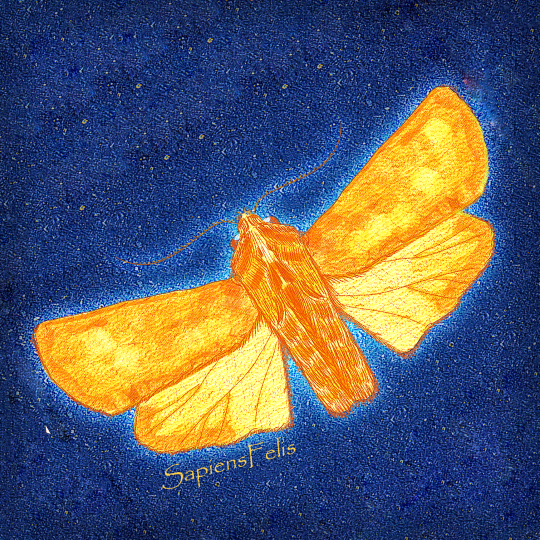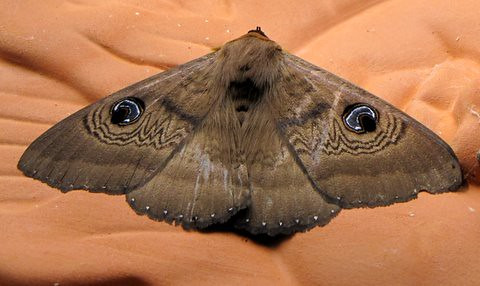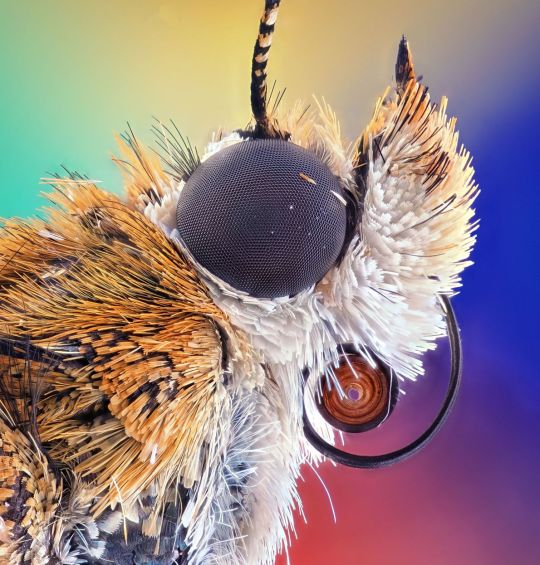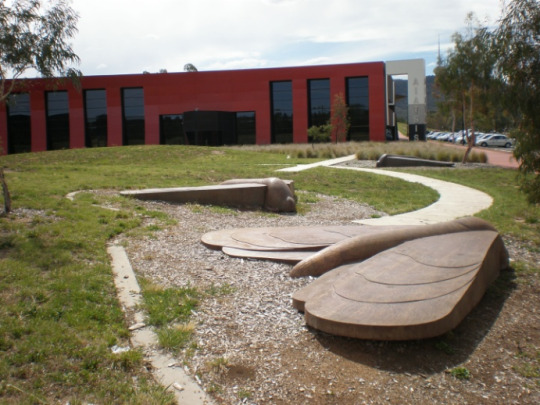#agrotis infusa
Text

The bogong moth (Agrotis infusa) is a classic of Australian fauna, well known for its mass migration events every spring, where it can travel up to 1000 kilometres to reach its destination. This piece is available in my shop as an A4 print here. 🦋
#my art#art#original post#bogong moth#agrotis infusa#artists on tumblr#moth#bug#insect#insects of tumblr#australia#australian art#australian artist#native insects#native fauna#sky#night#stars#illustration#illustrators on tumblr#digital art#digital artist#moths#bugs#insects#entomology#etsy#etsy shop#etsy store
20 notes
·
View notes
Note
If you haven't already, mayhaps you could do an excerpt on the Bogong Moth.
Moth Of The Day #135
Bogong Moth
Agrotis infusa
From the noctuidae family. They have a wingspan of 25-35 mm. They tend to inhabit urban areas, forests and woodlands. They can be found throughout Australia, New Zealand and Tasmania. The name derives from the Dhudhuroa (an Aboriginal Australian language) word bugung, which describes the brown coloration of the moth.


#moth#moths#lepidopterology#lepidoptera#pretty moth#nature#insect#bugs#moth of the day#motd#bug#insects#lepidoptery#entomology#bugblr#noctuidae moth#noctuidae#bogong moth#australian moth
139 notes
·
View notes
Text
ដង្កូវកាត់ដើមទូទៅ
ឈ្មោះទូទៅជាភាសាខ្មែរ: ដង្កូវកាត់ដើមទូទៅ
ឈ្មោះទូទៅជាភាសាអង់គ្លេស: Common cutworm
ឈ្មោះវិទ្យាសាស្ត្រ: Agrotis infusa
គ្រួសារ: Noctuidae
ការពិពណ៌នា
ពង: ពងជាកញ្ចុំដាក់លើស្លឹកដំណាំ ឬស្មៅចង្រៃនៅជិតដី ។
មិនទាន់ពេញវ័យ: ដង្កូវមានប្រវែងចាប់ពី ២៥ម.ម ទៅ ៥០ម.ម ។ ដង្កូវកាត់ដើមអាចមានពណ៌ខុសៗគ្នា ប៉ុន្តែជាធម្មតា មានពណ៌ត្នោតប្រផេះចាស់ ។…

View On WordPress
0 notes
Photo

Bogong moth by Ahmad Fauzan, 2020.Jakarta, Indonesia. 5X (Objective Lens Magnification).
The bogong moth (Agrotis infusa) is a temperate species of night-flying moth, notable for its biannual long-distance seasonal migrations towards and from the Australian Alps, similar to the diurnal monarch butterfly. - Wikipedia.
16 notes
·
View notes
Text
Lacking the dangerous charisma of other Aussie undesirables, such as red-back spiders, funnel-webs or tiger snakes, these largish, muddy-brown insects were the embodiment of abject otherness, their persistent knocking against uncurtained windows and sneaky incursions into closely guarded domestic interiors summoning inchoate fears and feelings of revulsion. [...] [T]he Great Invasion of 1969, when [...] the nation’s capital fell prey to such a large bogong infestation that the automatic lifts and air-conditioning shafts of some high-rise office buildings were blocked by resting moths, while parts of the city even suffered power failures [...]. From time to time, bogong moths do make the news: not just the college news, or the local news, but the national, and even international news. [...] [T]hey hit the headlines worldwide when several fell victim to the heatwave that stopped play during the women’s final of the 2009 Australian Open tennis tournament in Melbourne. As the mercury soared to 43 degrees Celsius, [...] the ‘brutal conditions proved too much for the swarms of bogong moths that flutter around the stadium’s bright lights, with dozens dropping dead on to the main court’ [...].
---
The story that really focused our attention on this pesky [...] Aussie [...] was the Great Canberra Currawong Catastrophe of October 2003.
This event would almost certainly not have hit the international news were it not for the fact that the federal capital was just about to be graced by a visitation by a US President [...]. Perhaps if he had have been resident in Canberra, as is the custom for Australian Prime Ministers, the President’s loyal ‘sheriff’, John Howard, might have sought to dissuade his American mate from coming ‘down under’ during the bogong moth season. As it was, though, just around the time that George Bush was due to make his eagerly awaited appearance, Parliament House came under major moth attack. [...] [T]his moth visitation provides an ‘annual example of the law of unintended consequences, in even the most planned environment.
Australia spent one billion dollars to build the house with the huge flagpole. But in all that planning, no one factored in the migration of bogongs’.
Clearly, the President had to be shielded from this unpleasant and potentially embarrassing infestation of tawny intruders. The parliamentary window ledges, along with sundry other architectural nooks, crannies and orifices, were duly sprayed with liberal quantities of [...] a pyrethrum-based insecticide, and extra gardeners were employed to come at dawn to sweep up the casualties that had piled up during the night, hauling them away by the wheelbarrow load.
Notwithstanding the increased media attention turned upon Canberra at this time, it is unlikely that this in itself would have been considered newsworthy, were it not that birds too began to be found among the dead. In all, fourteen currawongs are said to have fallen victim to this moth eradication campaign, presumably (although this was never proven conclusively) from the ingestion of poisoned insects. In the following weeks, moreover, and for reasons that remain obscure, magpies as well as currawongs shunned Capital Hill, the modest rise within which, in a tremendous feat of architectural prowess, Australia’s parliamentary seat of power is sited. [...]
[T]he grounds of our flash New Parliament House were littered with big black bird carcasses [...].
---
In Australia, Agrotis infusa, as it is known to Western science, typically begins and ends its life-cycle on the slopes and plains west of the Great Dividing Range in northern New South Wales and southern Queensland. Each spring, swarms of adult moths fly south into the Snowy Mountains [...] in search of the cool dark crevices [...] where they while away the hot summer months [...]. This was always a potentially perilous journey, but it became a whole lot more so during the twentieth century. [...] Canberra is right in their flight path, and, in addition to the domestic illumination of its sprawling suburbs, the 40,000 lights of the New Parliament House, with its elevated floodlit flagpole beckoning from afar, burn long and strong. [...] The bogong moth is one of many creatures whose migratory life-cycles have helped over time to form the warp and weft of more-than-human life on this continent, weaving species and places together into complex patterns of collective flourishing. [...]
---
All text above by: Kate Rigby. “Getting a Taste for the Bugong Moth.” Australian Humanities Review Issue 50. May 2011. [Bold emphasis and some paragraph breaks/contractions added by me.]
58 notes
·
View notes
Photo

Agrotis infusa by Ahmad Fauzan
National geographic
0 notes
Text
Bees use shark ‘supersense’ to help find food
Flying insects such as bees and moths have secret senses that allow them to ‘feel’ nearby flowers and navigate over long distances, according to new research.
Armed with sensitive antennae and wide-angled compound eyes, bees have a sophisticated set of senses to help them search out pollen and nectar as they buzz from flower to flower.
But new research is revealing that bumblebees may employ another hidden sense that lets them detect when a flower was last visited by another insect.
Professor Daniel Robert, an expert in animal behaviour and senses at the University of Bristol, UK, has discovered that bumblebees have the ability to sense weak electrostatic fields that form as they fly close to a flower.
‘A bee has a capacity, even without landing, to know whether a flower has been visited in the past minutes or seconds, by measuring the electric field surrounding the flower,’ Prof. Robert explained.
The discovery is one of the first examples of electroreception in air. This sense has long been known in fish such as sharks and rays, which can detect the weak electrical fields produced by other fish in the water. Water-dwelling mammals such as platypus and dolphins have also been found to use electric fields to help them hunt for prey.
But rather than hunting for fish, bees appear to use their ability to sense electrical fields to help them find flowers that are likely to be rich in pollen and nectar.
Charge
Bees develop an electrostatic charge because as they fly they lose electrons due to the air rubbing against their bodies, leading to a small positive electric charge. The effect is a bit like rubbing a party balloon against your hair or jumper, except the charge the bees accumulate is around 10,000 times weaker.
Flowers, by comparison, are connected to the ground, a rich source of electrons, and they tend to be negatively charged.
These electrostatic charges are thought to help bees collect pollen more easily. Negatively charged pollen sticks to the positively charged bee because opposite charges attract. Once the pollen sticks to the bee, it too becomes more positively charged during flight, making it more likely to stick to the negatively charged female part of a flower, known as a stigma.
Bees develop a positive electric charge as they fly, which helps them to collect pollen from negatively charged flowers. Image credit – Pxfuel.com/DMCA
But Prof. Robert and his colleagues wondered whether there could be more to this interaction. When they put an electrode in a flower, they detected a current flowing through the plant whenever a bumblebee approached in the air. Their study revealed that the oppositely charged flower and bee generate an electrostatic field between them that exerts a tiny attractive force.
To study whether the bees are aware of this electrostatic field, they then offered bumblebees discs with or without sugar rewards. Those with sugar also had 30 volts of electricity flowing through them to create an electrical field. They showed that the bees could sense electrical field and learn that it was associated with a reward. Without the charge, bees were no longer able to correctly identify the sugary disc.
Research by another group published shortly after Prof. Robert’s own work also showed that honey bees are also able to detect an electrical field. But exactly how the insects were able to do this remained a mystery, leading Prof. Robert to set up the ElectroBee project.
‘Very few animals have the capacity to read the stars and use it to find, north, south, east or west.’
–Professor Eric Warrant, Lund University, Sweden
Hairs
He has discovered that fine hairs on the bees’ bodies move in the presence of weak electrical fields. Each of these hairs has nerves at its base that are so sensitive they can detect tiny movements – as little as seven nanometres – caused by the electrical field.
Prof. Robert believes that when a bee visits a flower, it may cancel out some of the negative charge and so reduce the electrostatic field that forms when bees approach. This change in the strength of the electrostatic field could allow other bees flying past to work out whether a flower is worth visiting before they land, helping to save time and energy.
Other signals, such as changes in the colour and smell of flowers, happen in minutes or hours, while switches in electric potential occurs within seconds.
Prof. Robert and his team are now testing their theory that the electric field helps bees know which flowers to visit by counting visits by bumblebees to flowers in a meadow this summer and measuring electric fields around the flowers.
Their findings could help scientists better understand the relationship between plants and pollinating insects, which may prove crucial for improving the production of many vital fruit crops that rely upon bees for pollination.
Prof. Robert is also investigating whether bumblebees use their electrostatic charge to communicate to their nest sisters about the best places to fly for pollen.
But while bumblebees use their extraordinary sensory power to find food just a few kilometres from their nests, another insect is using another hidden sense to make far longer journeys.
The Bogong moth can travel more than 1,000km to hibernate in caves during the Australian summer. Image credit – Lucinda Gibson & Ken Walker, Museum Victoria/Wikimedia, licenced under CC BY-SA 3.0
In Australia, Bogong moths (Agrotis infusa) flitter steadily from various parts of the country and make their way towards the Snowy Mountains in the southeast. They fly for many days or even weeks to reach the high alpine valleys of the highest mountain range in the country, sometimes travelling over 1,000km. Once there, the insects hibernate in caves typically above 1,800m for the Australian summer, before making the return journey.
The only other insect known to migrate so far is the monarch butterfly in North America. But while the monarch butterfly relies in part on the sun’s position for navigation, the moths fly by night. Professor Eric Warrant, a zoologist at Lund University in Sweden, has been fascinated with how these insects, just a couple of centimetres in length, managed such a feat ever since he was a student in Canberra, Australia.
Moth mystery
He suspected that the moths might use the Earth’s magnetic field to find their way, so his team tethered moths to a stalk that allowed them to fly and turn in any direction before surrounding them with magnetic coils to manipulate Earth’s magnetic field.
For two years, experiments failed. While the moths did appear to be influenced by the magnetic field, they were using something else to navigate too – their vision.
‘It is a little like how we would go hiking,’ said Prof. Warrant, who is trying to unravel how the moths sense the Earth’s magnetic fields in his project MagneticMoth. ‘We’d take a reading from a compass, then look for something to walk towards in that direction, a tree or mountain peak.’
His research has already shown that the moths check their internal compass every two or three minutes and continue to make for a visual cue ahead. But what are the insects able to see at night?
Further research revealed something remarkable. When Prof. Warrant downloaded an open source planetarium programme called Stellarium and projected the Australian night sky above the moths, he discovered they were using the stars.
‘Very few animals have the capacity to read the stars and use it to find, north, south, east or west,’ said Prof. Warrant. ‘We (humans) learnt how to do it. Some birds do it.’
But insect eyes of bogongs mean they don’t simply follow one guiding star. Rather they are sensitive to panoramic scenes.
‘In the southern hemisphere, the Milky Way is much more distinct than it is here in the northern hemisphere,’ said Prof. Warrant. ‘It really is a stripe of pale light in which there are interspersed very bright stars.’ He believes that the moths are at least in part guided to their cool alpine caves by the light of the Milky Way.
Prof. Warrant believes that Bogong moths naviagte in part by using the Milky Way as a guide. Image credit – Dave Young/Flickr, licenced under CC BY 2.0
The discovery could also lead to the development of new types of navigation for our own species too. GPS, for example, relies upon a constellation of satellites that are vulnerable to disruption. Prof. Warrant believes studying an insect capable of flying 1,000km to a cave using a brain the size of a rice grain, could help us find alternatives too.
‘Animals seem to solve complex problems with little material and low amounts of energy,’ Prof Warrant said.
The research in this article was funded by the EU. If you liked this article, please consider sharing it on social media.
Originally published on Horizon magazine.
source https://horizon.scienceblog.com/1393/bees-use-shark-supersense-to-help-find-food/
0 notes
Text
Lacking the dangerous charisma of other Aussie undesirables, such as red-back spiders, funnel-webs or tiger snakes, these largish, muddy-brown insects were the embodiment of abject otherness, their persistent knocking against uncurtained windows and sneaky incursions into closely guarded domestic interiors summoning inchoate fears and feelings of revulsion. [...] [T]he Great Invasion of 1969, when [...] the nation’s capital fell prey to such a large bogong infestation that the automatic lifts and air-conditioning shafts of some high-rise office buildings were blocked by resting moths, while parts of the city even suffered power failures [...].
Within the public space of the federal capital, the world of the Kamberri is recalled in the guise of sundry bogong sculptures, such as those that grace the grounds of the Australian Institute of Aboriginal and Torres Strait Islander Studies on the Acton Peninsula, once a major corroboree site.


In Australia, Agrotis infusa, as it is known to Western science, typically begins and ends its life-cycle on the slopes and plains west of the Great Dividing Range in northern New South Wales and southern Queensland. Each spring, swarms of adult moths fly south into the Snowy Mountains of southern New South Wales and northern Victoria in search of the cool dark crevices in alpine blockstreams, cavernous piles of granite boulders, where they while away the hot summer months in a process known as ‘aestivation’. There they make themselves collectively cosy during the day by tucking their heads under one another’s wings, covering the rock walls like scales or roof tiles. [...]
The urge to set off on this annual migration appears to be triggered by the drop in barometric pressure that accompanies the formation of summer storms. The moths travel by night, upwards of 1,000 kilometres in some cases, feeding on nectar along the way, and dropping down to ground to shelter during the day. This was always a potentially perilous journey, but it became a whole lot more so during the twentieth century. In addition to the perennial risk of being blown off course and towards the eastern seaboard by westerly storm winds, the growth of towns illuminated ever more brightly by electric lights has proven a not infrequently fatal attraction for migrating moths. It is thought that the lights ‘fool the moths into behaving as if the sun was coming up. Their natural response is to dive down to the ground to find a dark place before the heat of the day sets in. … Buildings can become covered with a thick coating of moths, desperately seeking dark cracks and crevasses to hide from the sun’ (‘Bogong Moths Migrating South’). Those that end up in Sydney, not to mention Melbourne, have gone seriously astray, probably as a result of stormy weather; but Canberra is right in their flight path, and, in addition to the domestic illumination of its sprawling suburbs, the 40,000 lights of the New Parliament House, with its elevated floodlit flagpole beckoning from afar, burn long and strong.


Bogongs that manage to survive the risks posed by storms, predators, poisons and the odd book-wielding student during their southern sojourn, return north to their breeding grounds in the relative cool of the autumn. Now that they are all grown up, they duly mate, whereupon the pregnant females cleverly lay their eggs on the stems of a variety of food plants. Previously native species, these are now all too often agricultural crops, such as cauliflower, silverbeet, lucerne, flax and sundry cereals. Needless to say, this practice has ensured that bogongs are if anything even more hated by farmers than by city slickers such as myself. When the larvae emerge in the guise of hungry caterpillars, creamy-coloured to begin with, then green, and finally grey, black or orange-brown in hue, they each make themselves a snug burrow in the soil at the base of their host plant. There they hide by day, craftily emerging under the cover of darkness to feed. This nightly feasting is bad news for seedlings, the stems of which are often gnawed right through, leading bogongs to be classed as a pestiferous ‘cutworm’ and, for the past fifty to one hundred years, regularly doused in an array of biocidal chemicals.
While the causes of this [bugong moth population] decline remain uncertain, the clear-felling of native vegetation in their breeding grounds and liberal use of biocides on the cropland that has replaced it are likely to be factors (Keaney). The industrial production of preferred settler Australian foodstuffs, and possibly other lucrative plants, in the bogong breeding grounds also appears to be threatening more than the moths themselves.
A paper published in 2001 (Green et al.) found that the raised levels of arsenic found in the outwash areas of those caves where bogongs had been aestivating over summer indicated that the moths were importing poison into the alps. Moreover, arsenic was also found in the faeces of mammals that prey on them, including bats and mountain pygmy possums, an already endangered species. The source of this arsenic could well be from accumulations in the soil, a legacy of its former use in pesticides, as well as in cattle and sheep dips, in lowland agriculture: the story of the bogong discloses connections across time as well as space.
---
Photos, captions, text from: Kate Rigby. “Getting a Taste for the Bugong Moth.” Australian Humanities Review. May 2011.
26 notes
·
View notes